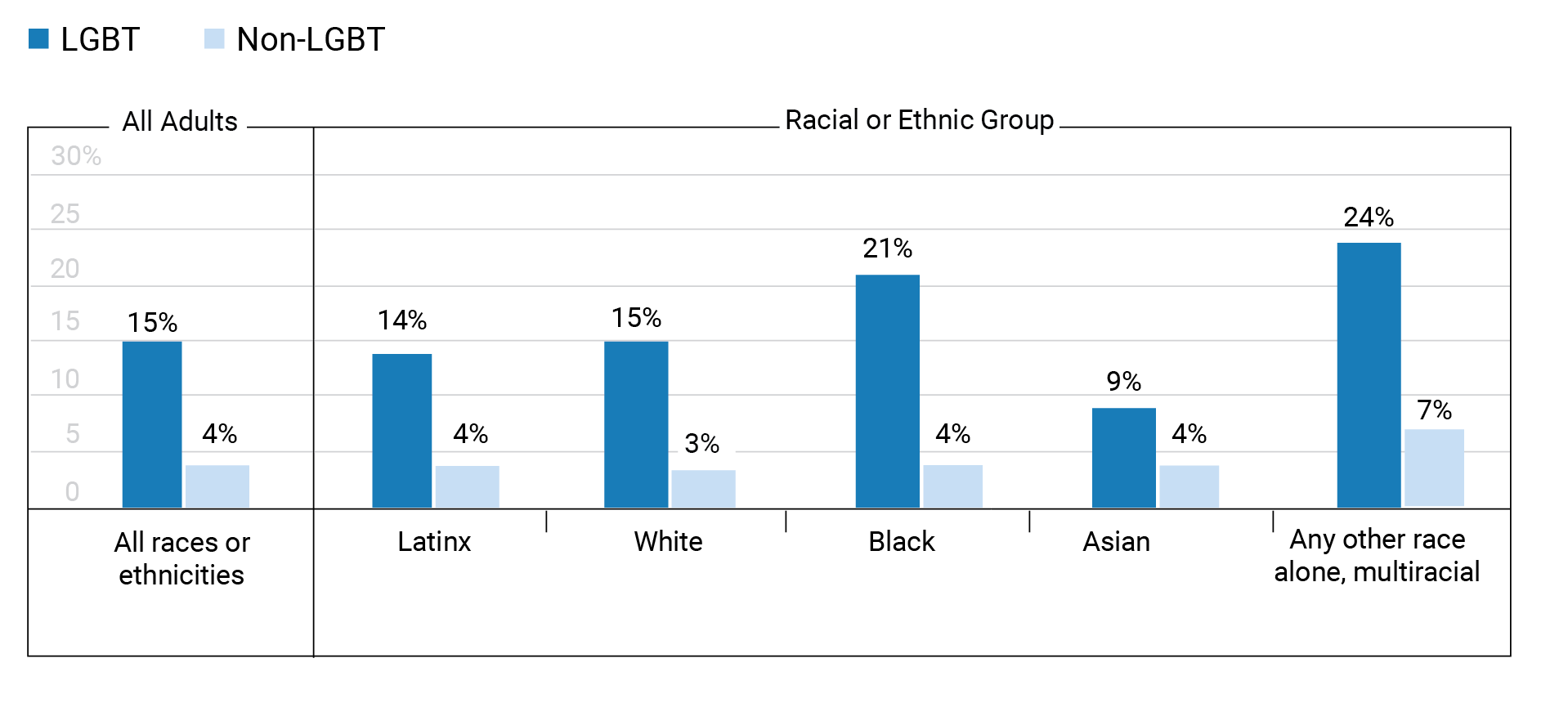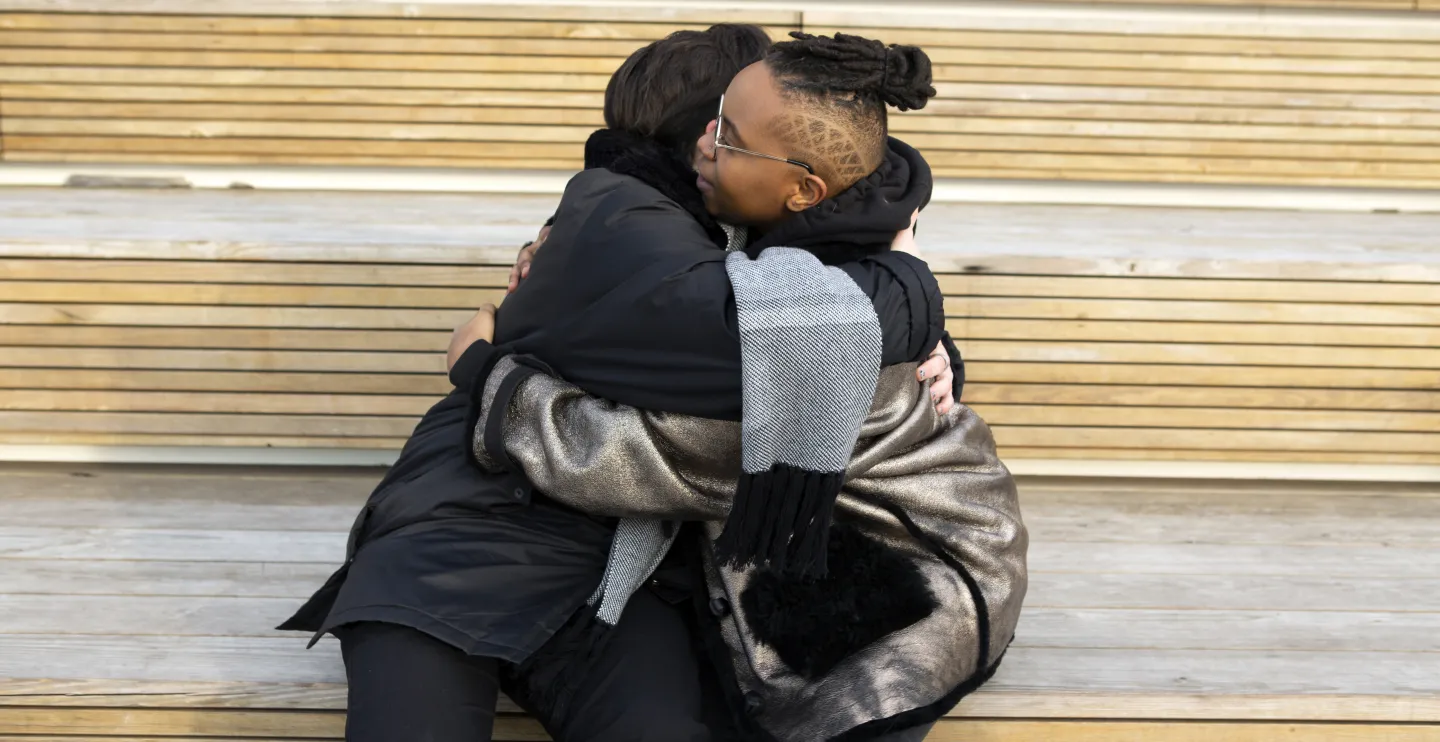Though a smaller percentage of LGBT adults in California had firearms in their households than non-LGBT adults, they reported higher rates of risk for firearm-related injury or mortality, including serious thoughts of suicide in the previous year and intimate partner violence, according to a new study by the UCLA Center for Health Policy Research.
Additionally, in analyzing data from the 2021 and 2022 California Health Interview Survey (CHIS), researchers found that more lesbian, gay, bisexual, and transgender adults in California (55%) reported that they were “somewhat” or “very worried” about being a victim of gun violence than non-LGBT adults (45%). California is home to an estimated 2.9 million LGBT adults.
“What we found in our study demonstrates a clear need for enhanced suicide and violence prevention efforts focused on LGBT people in California,” said Kerith Conron, lead author and formerly the Blachford-Cooper Research Director and Distinguished Scholar at the Williams Institute at UCLA School of Law.
The study, which was supported by the National Collaborative on Gun Violence Research, found that more than three times as many LGBT adults reported they had serious thoughts about suicide in the past year compared to non-LGBT adults (15% vs. 4%). Serious thoughts about suicide were more common among LGBT than non-LGBT adults across all racial and ethnic groups.
Percentage of California adults who seriously thought about suicide in the past 12 months

In total, an estimated 416,000 LGBT adults in the state thought seriously about suicide in the past year. This figure includes an estimated 31,600 who live in households with firearms, the data showed.
About 1 in 5 (21%) Black LGBT adults had serious suicidal thoughts in the past year. Nearly a quarter (24%) of LGBT respondents who are American Indian, Alaska Native, Native Hawaiian, Pacific Islander, who reported another race, or who are multiracial reported seriously thinking about suicide in the past year. For white LGBT adults it was 15%.
The researchers also found that across all racial and ethnic groups, higher percentages of LGBT adults said they were worried about being a victim of gun violence compared to non-LGBT adults. Non-LGBT white adults were least likely to express fear of being a victim of gun violence (31%), while LGBT Asians were most likely to be afraid of being a gun violence victim (71%).
“It’s not surprising that more LGBT people of color fear being a victim of gun violence given their higher levels of exposure to violence and other hostility,” said Sean Tan, senior public administration analyst at the UCLA Center for Health Policy Research (CHPR).
Among LGBT adults who completed the 2022 CHIS, the nation’s largest state health survey, nearly one in five (19%) reported being a victim of a hate crime or incident in their lifetimes.
Greater exposure to violence and harassment is associated with higher rates of depression and serious thoughts of suicide among LGBT people. Prejudice against bisexual people, who are in the majority among LGBT people, may also contribute to higher rates of intimate partner violence among LGBT adults, the report notes.
Tan and Conron also found that intimate partner violence was more common for LGBT adults (4.1% of those surveyed) compared with non-LGBT adults (2.4%). Physical or sexual intimate partner violence included being pushed, hit, slapped, kicked, bitten, choked, beaten up, and physically forced to have unwanted sex by an intimate partner. An estimated 82,000 bisexual people (more than 1 in 20) experienced physical or sexual violence from an intimate partner in the previous year. This includes an estimated 7,600 bisexual adults who live in households with a firearm.
“Ever since the Pulse nightclub shooting, researchers have sought to understand how lesbian, gay, bisexual, transgender and queer populations are affected by firearm violence,” Tan said, referencing the 2016 shooting that killed 49 people and wounded 53 more at an LGBTQ venue in Orlando, Florida.
According to the study, 14% of LGBT adults had firearms in their households — which includes those kept in a garage, outdoor storage area, or motor vehicle — and 18% of non-LGBT adults did. Among those who had a firearm at home, 8% of both LGBT and non-LGBT adults reported that a firearm in their household was kept loaded and unlocked. According to state data, there are 3,000 firearm deaths and 9,000 people are injured by firearms each year in California.
Other key findings:
- LGBT adults in rural areas were more likely to own firearms than those who live in urban areas, 28% vs. 13%.
- Among LGBT adults, 60% of those ages 18–24 and 59% of those ages 25–34 were worried about being a victim of firearm violence compared with 49% of those ages 50–64 and 36% of people 65 and older.
Conron said that findings about LGBT firearm access and safety, suicide risk, intimate partner violence, and fears of firearm victimization captured in the study could suggest that specific outreach to LGBT communities may be needed.
However, the authors said that the state must also close a critical information gap. Although about 9% of California adults identify as LGBT, no information is available about the number of LGBT people killed by firearms each year (or who die by any cause for that matter) because demographic information about sexual orientation, gender identity, and sex assigned at birth are not systematically recorded on death certificates, police reports, and other sources used by the state.
“This gap is highly problematic because LGBT people are at heightened risk of violence, including hate crimes,” Conron said.
“LGBT people are also at comparable or higher risk of intimate partner violence, and they are more likely to report suicide attempts, further underscoring why we need to study firearm violence as a matter of public health and human rights,” said Ninez A. Ponce, director of the UCLA CHPR.
Ponce and Michael Rodriguez, professor emeritus of family medicine at the David Geffen School of Medicine at UCLA, and executive director of the Alliance of Academics and Communities for Public Health Equity, were co-principal investigators on studies looking at firearms among understudied populations.





